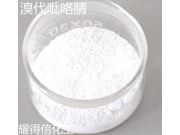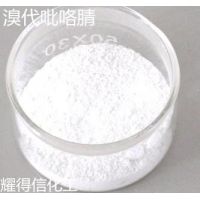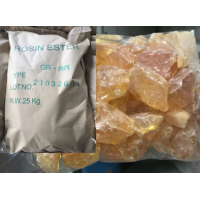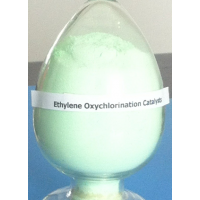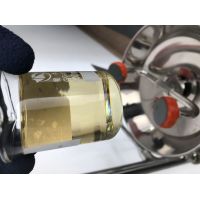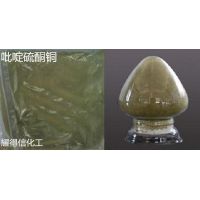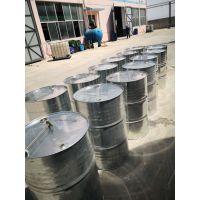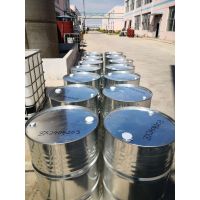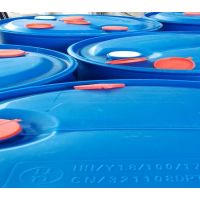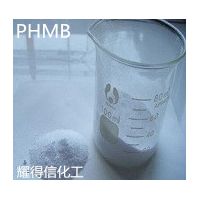Used in non-metal Marine Antifouling paint、
It is a metal-free antifouling agent for use in antifouling paints for ship hulls or other marine structures. this product has a broad spectrum of activity against hard-shelled and soft-bodied invertebrate animal fouling organisms. Because of its chemical and physical stability in coatings, the low water solubility and leachability, this product containing antifouling paints can often be specified for multi-year dry-docking intervals comparable to those achieved with copper-based products.
General Information
Common Name (ISO) Tralopyril
IUPAC Name 4-bromo-2-(4-chlorophenyl)-5-(trifluoromethyl)-1H-pyrrole-3-carbonitrile
CAS Name :1H-Pyrrole-3-carbonitrile, 4-bromo-2-(4-chlorophenyl)-5-(trifluoromethyl)
CAS Registry No.122454-29-9
Molecular Formula C12H5BrClF3N2
Molecular Weight 349.5
Structural Formula
Chemical And Physical Properties
These properties are typical but do not constitute specifications:
Appearance White to off-white powder
Purity (Chromatography) Minimum 95.0% w/w
Water Content (Karl-Fisher Titration) Maximum 0.5% w/w
Particle Size Distribution (Laser Diffraction) D50: 4.0-10.0 µm; D99: maximum 25.0 µm
Oil Absorption Value (ISO 787-5) 28 ml per 100 g
Density 1.714 g/ml at 20°C
Vapour Pressure 1.9 x 10-8 Pa at 20°C; 4.6 x 10-8 Pa at 25°C
Dissociation Constant pKa = 7.08 at 26°C
pH 5.16 at 22°C (0.1% w/v dispersion in distilled water)
Solubility In Water And Organic Solvents
Solubility in Water
Column Elution Solubility, in mg/l, at 20°C
Distilled Water (pH 4.9) 0.17
Artificial Seawater (pH 8.1) 0.16
Solubility in Organic Solvents
Solubility, in g/l, at 20°C
Acetone
Ethyl acetate
Methanol
n-Octanol
n-Heptane
Xylene
Chemical Stability And Compatibility
There are no known incompatibilities between this product and binder resins, pigments, fillers, solvents or additives that are commonly used in antifouling paints. this product is prone to hydrolysis and photolysis in dilute aqueous solutions. However, it has been demonstrated that this product can be used in water-borne antifouling paints without any stability issues. Photolysis of this product will normally not occur in pigmented coating systems.
Thermal Stability
this product exhibits excellent thermal stability. In dynamical Differential Scanning Calorimetry (DSC) in open atmosphere only melting (±249º) and endothermal decomposition was observed. In a dynamical DSC run under closed conditions a large exotherm was measured from ±230º (325 J/g), with melting during the exotherm.
Shelf Life
If stored at ambient temperature, in the original sealed container, this product Technical has an initial shelf life of five years.
Antifouling Paint Formulation
this product is fit for use in different types of antifouling paint including traditional rosin-based Controlled Depletion Polymer (CDP) paint types, as well as Self-Polishing Copolymer (SPC) systems.
It is recommended to use this product in conjunction with a soft fouling agent to ensure complete protection against both hard and soft fouling.
Recommended Use Levels
Effective use levels of this product in copper-free antifouling paints are typically between 4 and 6 per cent by weight (on total formula, wet paint). Alternatively, this product can be used in conjunction with a copper-based biocide, either to reduce the copper level without sacrificing performance or to increase the performance and/or service life of copper-based products.
Advantages:
metal-free antifouling agent
• Low use concentrations provide cost-effective alternative to copper-based antifoulants
• Broad spectrum control of hard fouling organisms
• Long-lasting efficacy
• Effective in marine and freshwater environments
• Breaks down rapidly in the aquatic environment
• Does not induce galvanic corrosion, particularly suitable for metal hulls including aluminium
• Provides paint formulation flexibility including bright colours and improved colour retention, lower VOC as well as water based paints
contact supplier or email to admin@b2bgood.com for transport and cleanrance agent


